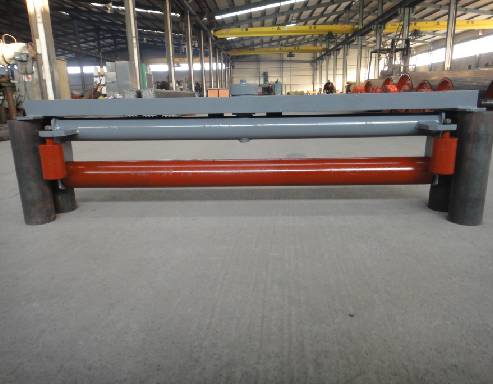 Afrikaans
Afrikaans  Albanian
Albanian  Amharic
Amharic  Arabic
Arabic  Armenian
Armenian  Azerbaijani
Azerbaijani  Basque
Basque  Belarusian
Belarusian  Bengali
Bengali  Bosnian
Bosnian  Bulgarian
Bulgarian  Catalan
Catalan  Cebuano
Cebuano  Corsican
Corsican  Croatian
Croatian  Czech
Czech  Danish
Danish  Dutch
Dutch  English
English  Esperanto
Esperanto  Estonian
Estonian  Finnish
Finnish  French
French  Frisian
Frisian  Galician
Galician  Georgian
Georgian  German
German  Greek
Greek  Gujarati
Gujarati  Haitian Creole
Haitian Creole  hausa
hausa  hawaiian
hawaiian  Hebrew
Hebrew  Hindi
Hindi  Miao
Miao  Hungarian
Hungarian  Icelandic
Icelandic  igbo
igbo  Indonesian
Indonesian  irish
irish  Italian
Italian  Japanese
Japanese  Javanese
Javanese  Kannada
Kannada  kazakh
kazakh  Khmer
Khmer  Rwandese
Rwandese  Korean
Korean  Kurdish
Kurdish  Kyrgyz
Kyrgyz  Lao
Lao  Latin
Latin  Latvian
Latvian  Lithuanian
Lithuanian  Luxembourgish
Luxembourgish  Macedonian
Macedonian  Malgashi
Malgashi  Malay
Malay  Malayalam
Malayalam  Maltese
Maltese  Maori
Maori  Marathi
Marathi  Mongolian
Mongolian  Myanmar
Myanmar  Nepali
Nepali  Norwegian
Norwegian  Norwegian
Norwegian  Occitan
Occitan  Pashto
Pashto  Persian
Persian  Polish
Polish  Portuguese
Portuguese  Punjabi
Punjabi  Romanian
Romanian  Russian
Russian  Samoan
Samoan  Scottish Gaelic
Scottish Gaelic  Serbian
Serbian  Sesotho
Sesotho  Shona
Shona  Sindhi
Sindhi  Sinhala
Sinhala  Slovak
Slovak  Slovenian
Slovenian  Somali
Somali  Spanish
Spanish  Sundanese
Sundanese  Swahili
Swahili  Swedish
Swedish  Tagalog
Tagalog  Tajik
Tajik  Tamil
Tamil  Tatar
Tatar  Telugu
Telugu  Thai
Thai  Turkish
Turkish  Turkmen
Turkmen  Ukrainian
Ukrainian  Urdu
Urdu  Uighur
Uighur  Uzbek
Uzbek  Vietnamese
Vietnamese  Welsh
Welsh  Bantu
Bantu  Yiddish
Yiddish  Yoruba
Yoruba  Zulu
Zulu conveyor components & parts
Conveyor Components and Parts The Unsung Heroes of Material Handling
In the world of material handling and logistics, conveyor systems are indispensable. They offer an efficient means of transporting goods in manufacturing facilities, warehouses, and distribution centers. However, the smooth operation of these systems heavily relies on the various components and parts that make up the conveyor system. Understanding these components is crucial for optimizing performance, ensuring safety, and prolonging the lifespan of the conveyor system.
Key Conveyor Components
1. Conveyor Belts At the heart of every conveyor system is the conveyor belt. Made from various materials such as fabric, rubber, or metal, conveyor belts are designed to carry products or materials from one point to another. The choice of belt material depends on the application; for instance, rubber belts are ideal for heavy loads, while fabric belts are lightweight and suitable for less demanding tasks.
2. Rollers Rollers are essential for supporting the conveyor belt and facilitating smooth movement. They usually come in different sizes and configurations, including drive rollers, idler rollers, and return rollers. Drive rollers are responsible for moving the belt, whereas idler rollers support the belt and keep it in alignment. High-quality rollers reduce friction and wear, making the conveyor system more efficient.
3. Drive Motors The drive motor powers the movement of the conveyor system. Electric motors are the most common type used, and they are selected based on the operational requirements such as speed, load capacity, and duty cycle. Proper sizing and selection of the drive motor are critical for maintaining system efficiency and avoiding unnecessary downtime.
4. Pulleys Pulleys play a crucial role in the manipulation of the conveyor belt. They are vital for redirecting the belt and managing the tension within the system. There are two main types of pulleys drive pulleys, which are connected to the motor and facilitate movement, and tail pulleys, which counterbalance the tension of the belt. The quality and design of the pulleys can significantly affect the overall performance of the conveyor system.
5. Belt Cleaners To ensure optimal performance, conveyor belts must be kept clean. Belt cleaners help remove debris and materials from the belt surface, reducing wear and tear and preventing contamination. They come in various designs, including primary and secondary cleaners, each serving a unique purpose in maintaining belt hygiene.
conveyor components & parts

6. Safety Devices Safety is paramount in conveyor systems. Various safety devices, such as emergency stop buttons, pull cables, and guarding systems, are implemented to protect operators and equipment. These devices are essential for preventing accidents and ensuring compliance with safety standards.
Importance of Proper Maintenance
While understanding conveyor components is essential, proper maintenance is equally crucial. Regular inspections and routine maintenance tasks, such as belt tracking and roller alignment, can prevent major issues and prolong the life of the conveyor system. A well-maintained conveyor system operates more efficiently, reduces the risk of breakdowns, and ultimately saves costs.
The Future of Conveyor Technology
As technology advances, the future of conveyor systems looks promising. Automation and integration with smart systems are becoming more prevalent. Innovations such as IoT sensors and predictive maintenance technology allow for real-time monitoring of conveyor components, enhancing efficiency and reducing downtime. Furthermore, advancements in material science are leading to the development of more durable and efficient conveyor components.
Conclusion
In summary, conveyor components and parts serve as the backbone of material handling systems. Understanding the roles and characteristics of these components allows businesses to optimize their conveyor systems, enhancing productivity and safety. As technology continues to evolve, staying informed about the latest innovations in conveyor components will be vital for companies aiming to maintain a competitive edge in the logistics and manufacturing industries. Whether you are maintaining an existing system or looking to invest in new technology, recognizing the importance of these unsung heroes is the key to success in material handling.
-
Revolutionizing Conveyor Reliability with Advanced Rubber Lagging PulleysNewsJul.22,2025
-
Powering Precision and Durability with Expert Manufacturers of Conveyor ComponentsNewsJul.22,2025
-
Optimizing Conveyor Systems with Advanced Conveyor AccessoriesNewsJul.22,2025
-
Maximize Conveyor Efficiency with Quality Conveyor Idler PulleysNewsJul.22,2025
-
Future-Proof Your Conveyor System with High-Performance Polyurethane RollerNewsJul.22,2025
-
Driving Efficiency Forward with Quality Idlers and RollersNewsJul.22,2025





























